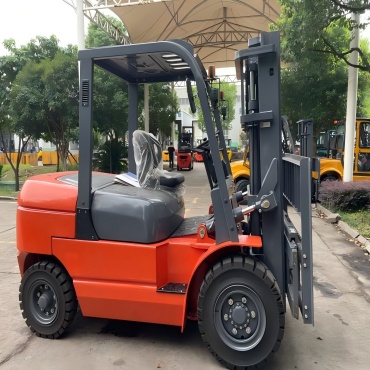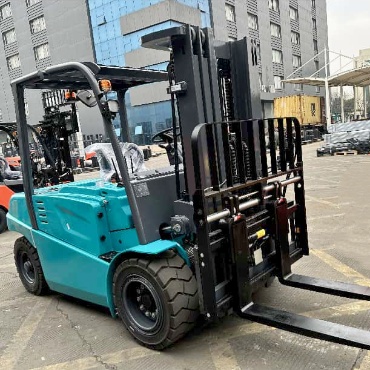- Diesel Forklift
-
- 25-30tonne Diesel Forklift 16T Forklift Truck 4.5 Ton Diesel Forklift 48 Ton Diesel Forklift 3 Ton Diesel Forklift 3.5 Ton Diesel Forklift 2.5 Ton Diesel Forklift 33 Ton Diesel Forklift 15 Ton Diesel Forklift 10 Ton Diesel Forklift 8 Ton Diesel Forklift 4 Ton Diesel Forklift 6Ton Forklift 2 Ton Diesel Forklift 1 Ton Diesel Forklift 1.8 Ton Diesel Forklift 1.5 Ton Diesel Forklift 7 ton forklift 35 ton Forklift Rough Terrain Forklift
- Electric Forklift
-
- Narrow Aisle Stand Up Counterbalance Forklift – High Efficiency Warehouse Solution 3.8ton Low Voltage Lithium Battery Forklift 12t Lithium high capacity forklift 12t large capacity electric forklift 8ton Electric Forklift 10t electric forklift truck 25ton Lithium Battery Forklift 7ton Electric Forklift 16-20t Large Capacity Lithium Battery Forklift 2 Ton Electric Forklift 1.8 Ton Electric Forklift 6 Ton Electric Forklift 1.5 Ton Electric Forklift 1.0-1.5 Ton Electric Forklift 2.5 Ton Electric Forklift 3.5 Ton Electric Forklift 4.0-4.5 Ton Electric Forklift 5 Ton Electric Forklift 3 Ton Electric Forklift 1.6-1.8Ton Three Wheel Electric Forklift 2 Ton three wheel electric forklift
- Rough Terrain Forklift
-
- 3.5t-4ton 4 wheel drive forklift 7 Ton All Rough Terrain Forklift 2-2.5T Rough Terrain Forklift Truck 4 ton off road forklift truck 3t 4 wheel drive forklift for sale 3.5t Two Wheel Drive Rough terrain forklift 3T Diesel Rough Terrain 2WD Forklift FLIFT 3.5ton all rough terrain forklift for sale 2WD 3t off Road Rough Terrain Forklift
- Electric Reach Truck & Pallet Truck / Pallet Stacker
-
- 5ton end rider electric pallet truck with customized 1.8m fork length 10ton-15ton heavy duty electric pallet truck 2.5ton all terrain electric pallet jack 1.5ton-2ton all terrain electric pallet truck with crane jib Counterbalanced Pallet Stacker 1600 lb to 2000 lb Capacity for Indoor Warehouses Heavy Duty 2T-2.5T Electric Stacker Forklift | High-Performance Stacker Lift High-Capacity 2.5t electric reach truck 1.0t -1.5t Electric Walkie Straddle Stacker 2ton Fully Electric Pallet Stacker 3 stage mast 2ton electric rough terrain pallet stacker 1.5ton off road Rough Terrain Stacker 1.8ton walkie Electric Pallet Truck Jack 1.5Ton Electric Pallet Stacker | Durable Walkie Stacker for Easy Material Handling 1200kg walking type electric pallet stacker 2ton roll and reel electric pallet truck Walkie Counterbalanced Stacker 1500–2000kg Capacity Compact Design 1ton outdoor rough terrain counterbalanced pallet stacker 3300lbs Electric off-road pallet stacker 2t Rough Terrain Pallet Truck Powered Pallet Truck with PU Wheels-2000kg Electric Pallet Jack 2t Elecric Hand Truck 1.5 Ton Electric Walkie Pallet Truck – Compact Power for Efficient Material Handling 2 Ton Reach Forklift 1.5 Ton Reach Forklift 2Ton -3Ton Electric Pallet Truck Semi-electric Pallet Stacker 1ton-1.6ton 3 Way Pallet Stacker Multi-Directional Sideloader Forklift 4 direction reach truck
- Customization Forklift
-
- 900kg CDD09B Electric Walking Type Counterweight Stacker Professional Walking Type Electric Stacker with Special Attachment 1ton Electric Outdoor Rough Terrain Telescopic Spreader Stacker 4t QDD40 Seated type Electric Tractor QDD60 Seated Type Fully Electric Tractor 3t QDD30C Electric Tractor with Turning Radius 1545mm 2t CQD20A Electric Simple Type Reach Forklift Truck 1.5t CQD15A Simple Type Electric Reach forklift Truck 5t Convertible Seated Electric Flat Truck 3t CBD30Z Electric Vehicle Transfer Truck 1.5t CDD15Y Electric Pallet Stacker (Rough Terrain) 1t CXD10-45 Electric High Lift-Order Picker 2t CQD20S-60 Four-way Walking Type Reach Forklift Truck CDD10A/15A Walking Type Fully Electric Pallet Stacker 3t QDD30A Standing Type Electric Tractor 1t CSD10 Man Mount Three-way Stacker 1.5t AGV type CDD15J-16 Electric Pallet Stacker CBD80 8t Electric Pallet Stacker 6t CBD60 Electric Pallet Stacker CBD120 1.2t Electric Pallet Stacker 2t CDD20D-30 Walking type Electric Pallet Staccker CDD08B-25 Counterweight Electric Pallet Stacker
- Forklift Attachements
-
- Waste Paper Fixture Fixed Short Arm non-sideshifting non-sideshifting Fixed Short Arm non-sideshifting Non-sideshifting Hinged Forks Caton Clamp Rotator non-Sideshifting Tire Clamps Pusher Turning Fork Clamps non-sideshifting Log Holder Sideshifting Broke Paper Clamps Sideshifting Sideshifting Single Load Stabilizer Fork Positioners Single Double Pallet Handler
What does a counterbalanced forklift mean? What are the structural characteristics?
Date: 2022-06-16 View:
What is a counterbalanced forklift?
Internal combustion counterbalanced forklifts are equipped with a counterweight at the rear, commonly referred to as a "counterweight". The counterweight material is generally made of cast iron, and its main function is to balance the longitudinal overturning moment generated by the mass of the cargo, thereby maintaining the longitudinal stability of the forklift.

The structural features of the counterbalance forklift are as follows:
1. Selection and installation of counterbalanced forklifts.
Generally speaking, the mass of the counterweight, the position of the center of mass and the number of rear suspensions are all given by the overall layout of the vehicle. The choice of the mass of the counterweight mainly considers the longitudinal stability of the forklift when it is fully loaded and when it is fully loaded. The quality of the counterweight directly affects the safety factor of the front and rear balance of the forklift, and is the main parameter that determines the safety factor of the forklift. When the total weight of the counterweight is determined, the installation size of the counterweight can be accurately determined according to the assembly form of the counterweight on the frame. There are two inverted V-shaped suspension blocks on the outer side of the forklift tail frame, and the balance can be fixed on it with two bolts.

2. Ventilation holes for counterbalanced forklifts.
Since heat balance is a very important parameter of a forklift, poor heat dissipation can easily lead to excessively high temperature of the engine cooling water, thereby affecting the performance of the forklift. Therefore, it is important to balance heavy-duty vent placement, air ducts, and airflow direction. Generally speaking, the higher and larger the ventilation holes, the more conducive to heat dissipation. It is best to use the rounded transition between the ventilation holes and the radiator to facilitate airflow guidance and improve heat dissipation performance.
3. The angle of the counterbalanced forklift.
The departure angle of the lower end of the counterweight is also very important, mainly to avoid friction between the lower end of the counterweight and the ground when going up and down slopes. In theory, the departure angle is equal to the maximum climbing angle for a particular vehicle. The position of the cut point at the lower end of the counterweight should be determined according to the maximum climbing and counterweight rear suspension of the specific model. In this paper, the calculation is performed on the basis of 20% climbing and 715 mm suspension after the balance weight. The calculation formula of the outermost height H of the balance weight is as follows:

4. The position of the lifting hole of the counterbalanced forklift.
It is also important to balance the positions of the two lift holes. In order to facilitate hoisting and improve safety, the positions of the two hoisting holes should be symmetrically arranged on the left and right sides of the center line of the balance weight, and the front and rear directions should be on the same line as the center of mass of the balance weight. Some counterweights use lugs, and their position is determined for the same reason.
5. Outline features of the counterbalanced forklift.
The balance weight has a certain influence on the appearance of the whole vehicle, so its outline should be carried out on the premise of satisfying the style of the whole vehicle. In vehicle design, important parameters such as length and turning radius also need to be considered, among which turning radius is more important than vehicle length.
.png)




